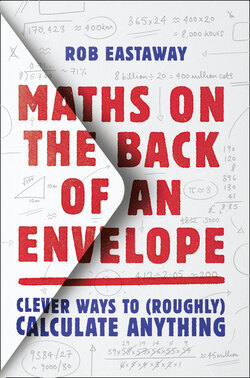Читать книгу Maths on the Back of an Envelope - Rob Eastaway - Страница 13
SENSITIVITY
ОглавлениеWe’ve already seen that the statistics should really carry an indication of how much of a margin of error we should attach to them.
An understanding of the margins of error is even more important when it comes to making predictions and forecasts.
Many of the numbers quoted in the news are predictions: house prices next year, tomorrow’s rainfall, the Chancellor’s forecast of economic growth, the number of people who will be travelling by train … all of these are numbers that have come from somebody feeding numbers into a spreadsheet (or something more advanced) to represent this mathematically, in what is usually known as a mathematical model of the future.
In any model like this, there will be ‘inputs’ (such as prices, number of customers) and ‘outputs’ that are the things you want to predict (profits, for example).
But sometimes a small change in one input variable can have a surprisingly large effect on the number that comes out at the far end.
The link between the price of something and the profit it makes is a good example of this.
Imagine that last year you ran a face-painting stall for three hours at a fair. You paid £50 for the hire of the stand, but the cost of materials was almost zero. You charged £5 to paint a face, and you can paint a face in 15 minutes, so you did 12 faces in your three hours, and made:
£60 income – £50 costs = £10 profit.
There was a long queue last year and you were unable to meet the demand, so this year you increase your charge from £5 to £6. That’s an increase of 20%. Your revenue this year is £6 × 12 = £72, and your profit climbs to:
£72 income – £50 costs = £22 profit.
So, a 20% increase in price means that your profit has more than doubled. In other words, your profit is extremely sensitive to the price. Small percentage increases in the price lead to much larger percentage increases in the profit.
It’s a simplistic example, but it shows that increasing one thing by 10% doesn’t mean that everything else increases by 10% as a result.7
